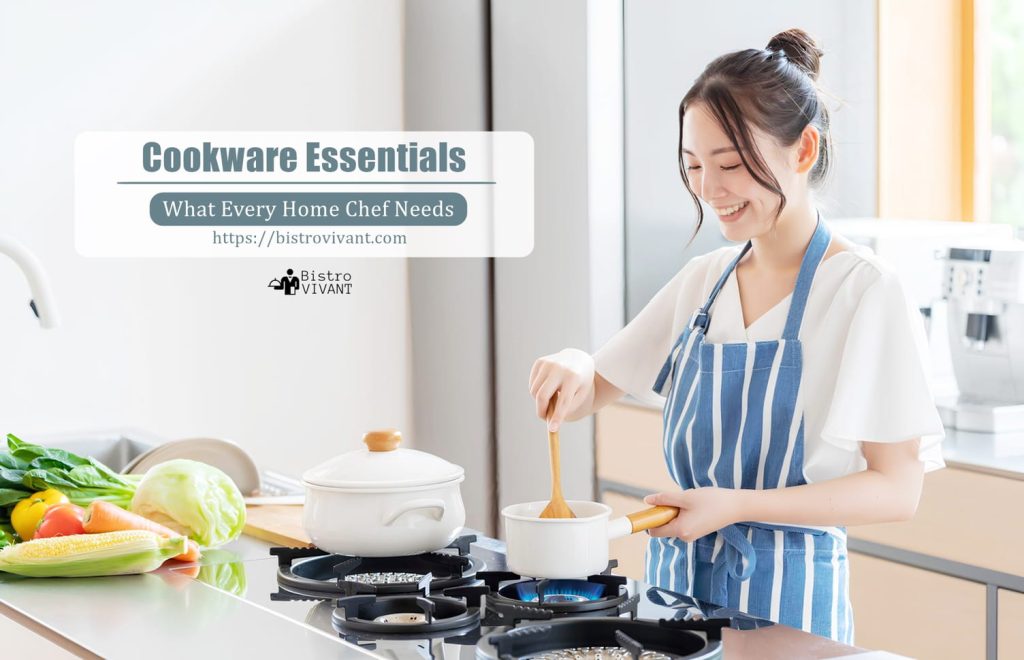Just step into your kitchen and imagine the delightful magic you can create with the right tools! Every home chef should arm themselves with Cookware Essentials that allow for culinary exploration and experimentation. From a versatile sauté pan to sturdy baking sheets, having the right gear not only elevates your cooking but also ensures safety in food preparation. In this article, you’ll discover the must-have items that will fill your kitchen with joy and efficiency, paving the way for delicious meals and endless creativity.
Key Takeaways:
- Quality Materials: Investing in cookware made from high-quality materials such as stainless steel, cast iron, or non-stick surfaces ensures durability and better cooking performance.
- Versatile Pieces: Essential pieces like a sauté pan, saucepan, and large stockpot provide versatility for various cooking techniques and recipes, making them indispensable in any kitchen.
- Proper Maintenance: Understanding how to care for and maintain your cookware, such as seasoning cast iron or avoiding metal utensils on non-stick surfaces, prolongs its lifespan and maintains cooking efficiency.
The Foundation of Cookware
For any aspiring home chef, having the right equipment is crucial for culinary success. The foundation of cookware focuses on the necessary pieces that can elevate your cooking experience and help you create delicious meals with confidence.
Pots and Pans: The Essential Duo
Pans and pots are the most vital tools in your kitchen arsenal, serving different yet complementary purposes. While a sturdy pot allows you to boil, steam, or simmer, a versatile pan is your go-to for frying, sautéing, and browning. Together, they form a necessary duo that enables you to tackle a variety of recipes with ease.
Materials Matter: Stainless Steel, Cast Iron, and Non-Stick
Cast iron, stainless steel, and non-stick are three primary materials you’ll encounter in cookware, each bringing its own set of benefits and drawbacks. Cast iron offers excellent heat retention and adds iron to your dishes, but requires special care to maintain its seasoning. Stainless steel is durable and resistant to rust, making it perfect for browning and deglazing. Meanwhile, non-stick pans are ideal for delicate foods and easy clean-up, although you must handle them with care to avoid scratching the surface.
Essential to any kitchen, choosing the right materials for your cookware can greatly influence not just the cooking process but also the flavors of your dishes. Stainless steel is fantastic for high-heat cooking and gives you that beautiful sear on meats, while cast iron can go from stovetop to oven, offering versatility and a natural non-stick surface when properly seasoned. However, be cautious with non-stick options, as overheating can release harmful chemicals, and they may not be suitable for high-heat searing. Balancing these materials in your collection ensures that you can tackle everything from searing steaks to whipping up delicate omelets!
Cooking Vessels for Specific Tasks
If you want to elevate your cooking game, understanding the role of specific cooking vessels is imperative. Each vessel serves a unique purpose, allowing you to achieve the best results in your culinary endeavors.
Saucepans for Sauces and Soups
Tasks like simmering sauces or crafting hearty soups come to life in a sturdy saucepan. Its tall, tapered sides help prevent splatters, while the even heat distribution ensures that your creations cook uniformly. Choose a saucepan with a comfortable handle for easy pouring and stirring, making it your trusty companion in the kitchen.
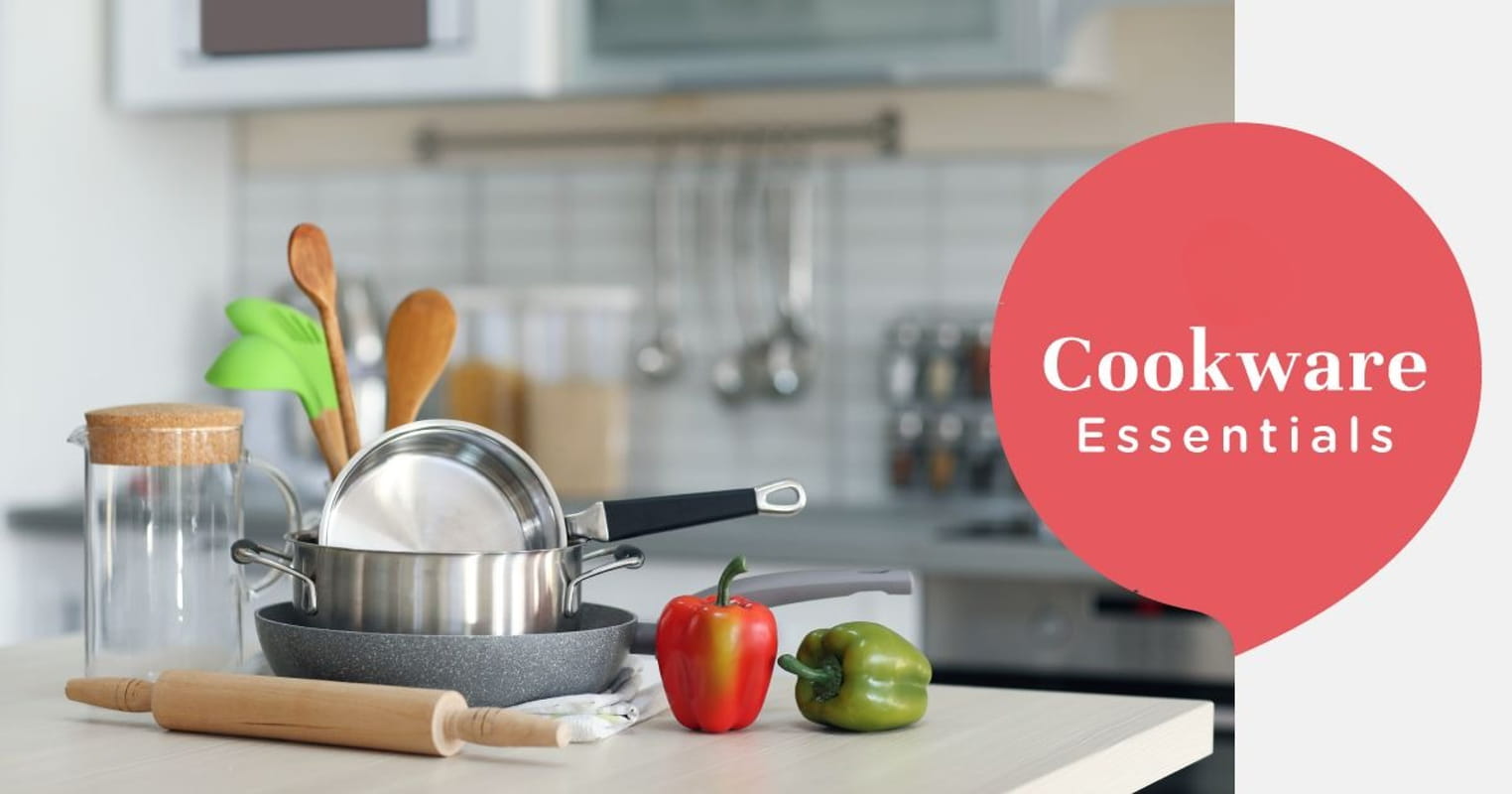
Dutch Ovens for Braising and Roasting
Soups and stews become divine when prepared in a Dutch oven, a heavy cast-iron pot that retains heat brilliantly. Braising cuts of meat or roasting poultry in this vessel results in tender, flavorful dishes, as it promotes slow cooking and maximum moisture retention.
Braising is an art, and the Dutch oven is your canvas. Designed to withstand high temperatures and equipped with a tight-fitting lid, it enables you to sear ingredients, then slowly cook them, transforming tough cuts of meat into succulent meals brimming with flavor. With a Dutch oven, you’re not just cooking; you’re creating comforting, savory masterpieces.
Woks for Stir-Frying and Quick Cooking
Any home chef can appreciate the versatility of a good wok, perfect for quick cooking methods like stir-frying. The shape of a wok allows for efficient heat circulation, while its depth prevents food from spilling out during tossing. With high sides and a wide base, it’s great for searing proteins and vegetables alike.
Specific to Asian cuisine, the wok’s design promotes high, direct heat, ideal for achieving that coveted *wok hei*, or “breath of the wok.” Whether you’re sautéing greens or creating a delicious fried rice, you’ll find that the quick cooking helps to preserve the vibrant colors and imperative nutrients of your ingredients. Just be mindful of your oil temperature to achieve that perfect sizzle, and you’re on your way to stir-frying success!
The Importance of Cookware Essentials
Despite the numerous gadgets that flood the culinary market, having the right cooking utensils is vital for every home chef. Quality utensils not only enhance your cooking experience but also ensure that you prepare delicious meals with ease and confidence. Investing in a few necessary tools will elevate your culinary repertoire and make each cooking adventure a joyous one.
Spatulas: Rubber, Metal, and Silicone
Rubber spatulas are a favorite for their flexibility and non-stick-friendly design, making them perfect for scraping bowls and folding batter. Metal spatulas, while sturdy for flipping, can scratch surfaces and shouldn’t be used on non-stick cookware. Silicone spatulas combine the best of both worlds; they withstand high temperatures and are safe on delicate coatings. Each type brings its own charm to your kitchen, ensuring you have the right tool for every task.
Whisks and Spoons: Essential Tools for Mixing and Serving
An indispensable pair in your kitchen arsenal, whisks and spoons are necessary for mixing, serving, and everything in between. When you whisk, you incorporate air into batters and sauces—now, isn’t that just fabulous? Wooden spoons are particularly beloved for their durability and the gentle handling of delicate mixtures, making them a go-to for stirring hearty stews and sauces.
The versatility of whisks and spoons cannot be overstated. They come in various sizes, shapes, and materials, catering to every need. You’ll find that a balloon whisk is ideal for whipping cream, while a flat whisk works wonders in a saucepan. Spooning serves not only to dish out delicious servings but also plays a role in measuring ingredients accurately. Having both in your kitchen empowers you to tackle any recipe that piques your interest!
Tongs and Forks: For Delicate and Hearty Foods
Utensils like tongs and forks provide you the control you need when handling both delicate and hearty foods. Tongs allow you to carefully flip or serve items without fear of smashing your hard work, while sturdy cooking forks can aid you in shredding meats or safely lifting hefty poultry. Both are invaluable in achieving precision in cooking.
Plus, the right tongs can make tossing salads a breeze or retrieving foods from boiling water a safe endeavor. They come in various designs, including locking mechanisms for seamless use, while forks with long prongs aid in serving without fuss. Having both these versatile utensils at your fingertips ensures you can tackle any dish, from delicate fish to the heartiest of meats, with grace and finesse.
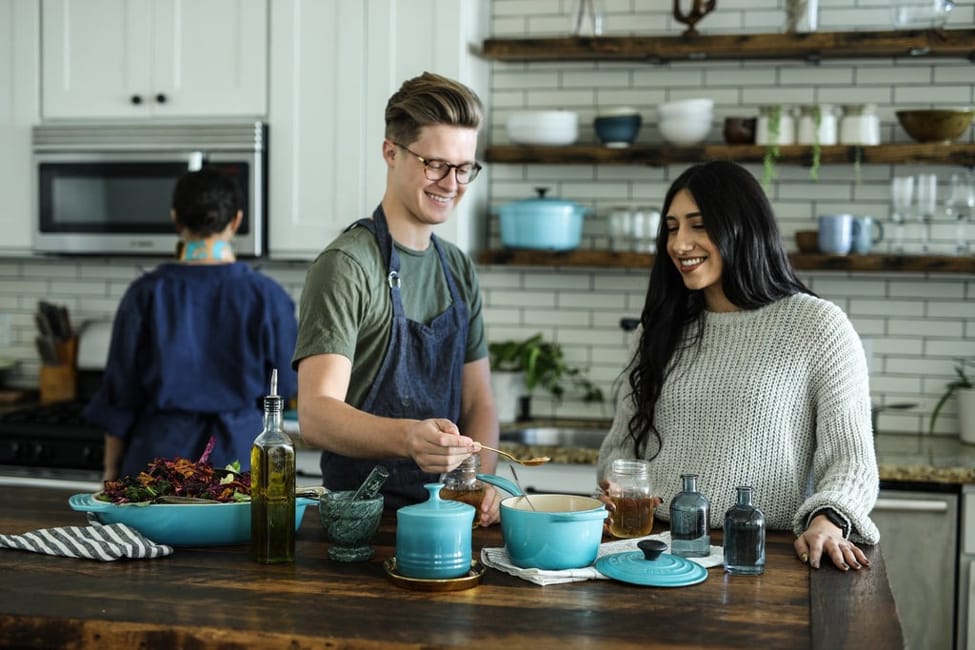
Cooking Surfaces and Accessories
Now that you have the right pots and pans for your culinary adventures, it’s equally crucial to consider your cooking surfaces and accessories. These necessary items will not only enhance your cooking efficiency but also ensure safety and comfort in your kitchen. If you’re looking for a thorough guide, check out this 10 Essential Pots and Pans for Any Home Cook.
Cutting Boards: Wooden, Plastic, and Marble
To elevate your food preparation, you’ll want a variety of cutting boards. Wooden boards are fantastic for their durability and aesthetic appeal, while plastic boards are lightweight and dishwasher-safe. Marble boards are perfect for rolling out dough, as they keep things cool. Selecting the right board for the task at hand adds a delightful touch to your cooking routine.
Colanders and Strainers: For Pasta, Rice, and Vegetables
Cooking requires you to strain and drain ingredients, making colanders and strainers absolute must-haves. These handy tools are necessary for rinsing vegetables, draining pasta, and straining rice, ensuring your meals are prepared just the way you like them.
It is pivotal to have colanders and strainers of different sizes in your kitchen arsenal. A large colander can handle hefty pasta portions, while smaller strainers are perfect for rinsing quinoa or herbs. Choosing the right one means no messy spills, allowing you to focus on creating beautiful dishes!
Oven Mitts and Pot Holders: Protecting Your Hands
Colanders and strainers may take the spotlight, but let’s not overlook oven mitts and pot holders—they’re your shield against burns! As you venture into hot pots and sizzling pans, quality oven mitts and pot holders become necessary to safeguard your beloved hands.
This simple accessory can prevent painful accidents in the kitchen, allowing you to confidently handle hot cookware. Invest in thick, heat-resistant mitts for ultimate protection, and indulge in a variety of colors and designs to brighten your cooking space. After all, safety and style can go hand in hand!
Specialty Cookware for Advanced Techniques
Keep in mind that, as you grow in your culinary journey, having the right specialty cookware can elevate your cooking game. Here’s a list of important pieces that can aid in mastering advanced techniques:
- Mandoline Slicer
- Pressure Cooker
- French Cone Strainer
- Ramen Pot
- Paella Pan
- Tagine
- Braising Pan
- Gnocchi Board
If you’re looking for more insights on important cookware, check out These Are the 8 Pots and Pans Every Cook Really Needs.
| Specialty Cookware | Purpose |
|---|---|
| Mandoline Slicer | For precise, uniform slicing of vegetables and fruits. |
| Pressure Cooker | For quick cooking, creating tender meals in a fraction of the time. |
| French Cone Strainer | For straining sauces and stocks to achieve silky textures. |
| Ramen Pot | For brewing the perfect broth and cooking noodles. |
| Paella Pan | For making the perfect paella with even heat distribution. |
| Tagine | For slow-cooking Moroccan stews with intense flavors. |
| Braising Pan | For larger cuts of meat and delicious braised dishes. |
| Gnocchi Board | For shaping and creating authentic gnocchi. |
Griddles for Pancakes and Breakfast Dishes
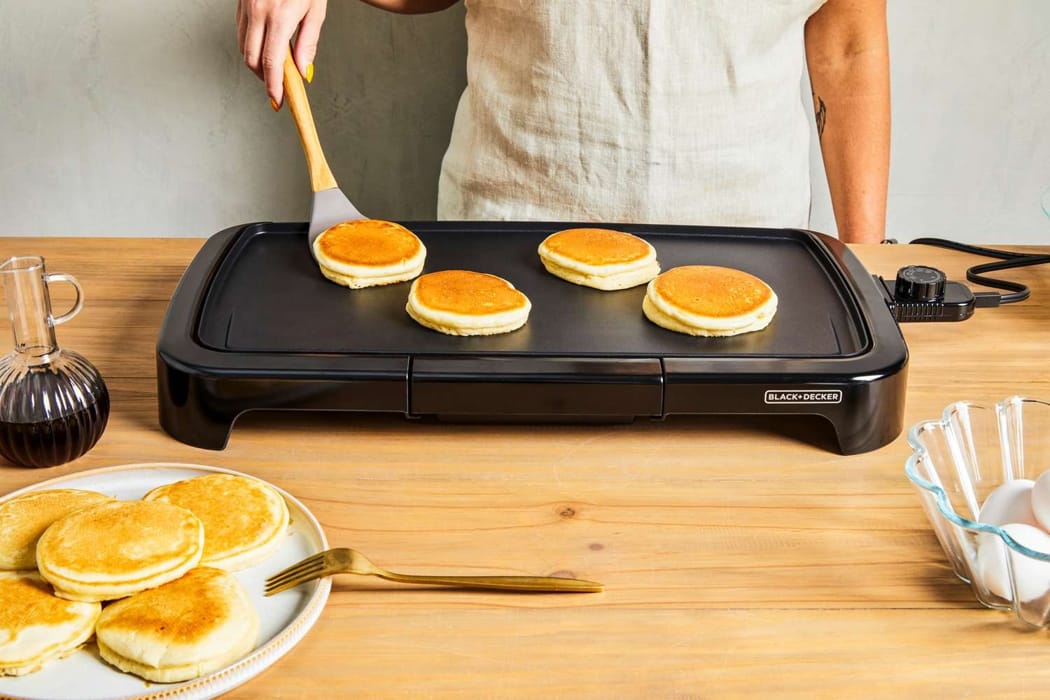
With a trusty griddle in your arsenal, you can whip up batches of fluffy pancakes or crispy bacon with ease. This flat cooking surface ensures even heat distribution, making breakfast time a delightful occasion. Choose a non-stick surface for effortless flipping and cleaning, ensuring your mornings are as joyful as the meals you create.
Skillets for Seared Meats and Pan-Frying
Cookware enthusiasts will tell you that a quality skillet is indispensable for achieving the perfect sear on meats and expertly pan-frying vegetables. With the right skillet, you unlock flavors and textures that elevate your recipes to gourmet status.
The benefits of a heavy-bottomed skillet cannot be understated. It provides even heating, which is crucial when seeking that golden crust on a steak or chicken. Cast iron skillets are particularly noteworthy for their excellent heat retention, allowing for not just searing but also easy transitions into the oven for finishing off meats. Recall, the secret here is a sizzling hot surface that gives you that delightful Maillard reaction!
Tagines and Braisers for Slow-Cooked Delights
Pan-frying tender meats and vibrant vegetables in a tagine or braiser can transform even the simplest ingredients into extraordinary meals. These specialized pots are designed for cooking with a unique lid or dome, which helps to trap moisture for succulent, slow-cooked dishes.
Braisers excel in low-and-slow cooking methods, gently coaxing flavors from your ingredients. In the case of tagines, the shape of the lid allows steam to condense and return to the dish, enhancing the richness and depth of flavor. Both pieces are invaluable for creating warming stews and delightful braised dishes you and your loved ones will cherish. Recall that the slow-cooked delights they prepare are not just meals; they are moments of connection and warmth!
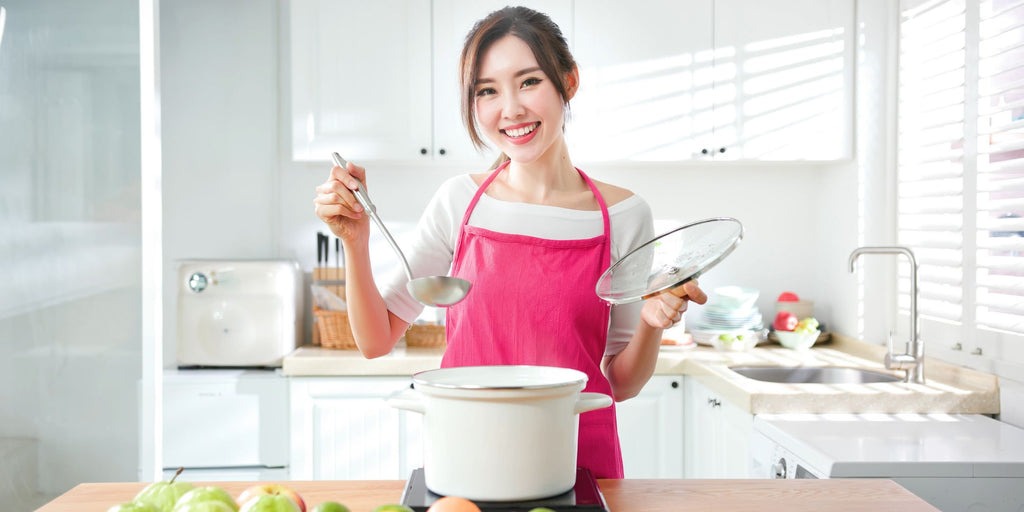
Caring for Your Cookware
Many home chefs underestimate the importance of caring for their cookware. Proper maintenance not only extends the life of your pots and pans but also enhances your cooking experience. To learn about important pots and pans, you can check The 7 Essential Pots and Pans Every Cook Needs. Let’s explore caring for your beloved kitchen gear.
Cleaning and Maintenance Tips
Tips for maintaining your cookware can make a world of difference. Here are some important cleaning and maintenance tips:
- Use a mild detergent for washing.
- Avoid using abrasive sponges on non-stick surfaces.
- Season your cast iron with oil after cleaning.
- Store your cookware without stacking, if possible.
- Assume that regular upkeep will save you from costly repairs later.
Storing and Organizing Your Cookware Collection
Cleaning your cookware is crucial, but so is organizing it. Store your pots and pans in a way that prevents scratches and damage. You may want to use a pot rack or arrange them in drawers with dividers. Keep heavier items at the bottom and lighter ones on top to make it easier for you to access what you need, all while reducing the risk of chips and dents.
Avoiding Common Mistakes and Damage
Your cookware deserves careful handling. Be cautious with high heat, as it can warp or damage materials. Always check the temperature ratings before using non-stick pans in the oven. Avoid soaking your cookware for extended periods, which can lead to rust and corrosion on certain materials.
Cookware often has its pitfalls, but you can navigate around them with ease. Keep an eye on any scratches, dents, or signs of wear. Remember that regular inspections and timely repairs can help you avoid costly replacements and keep your kitchen running smoothly.
Summing up
To wrap up, as you embark on your culinary adventures, remember that having the right cookware is crucial to elevating your kitchen experience. From versatile frying pans to sturdy pots and handy tools, each piece plays a vital role in your cooking journey. Embrace the joy of cooking with well-selected cookware that complements your style and needs, ensuring delicious meals that will delight you and your loved ones. So, don your apron, grab those crucial items, and let your kitchen creativity shine!
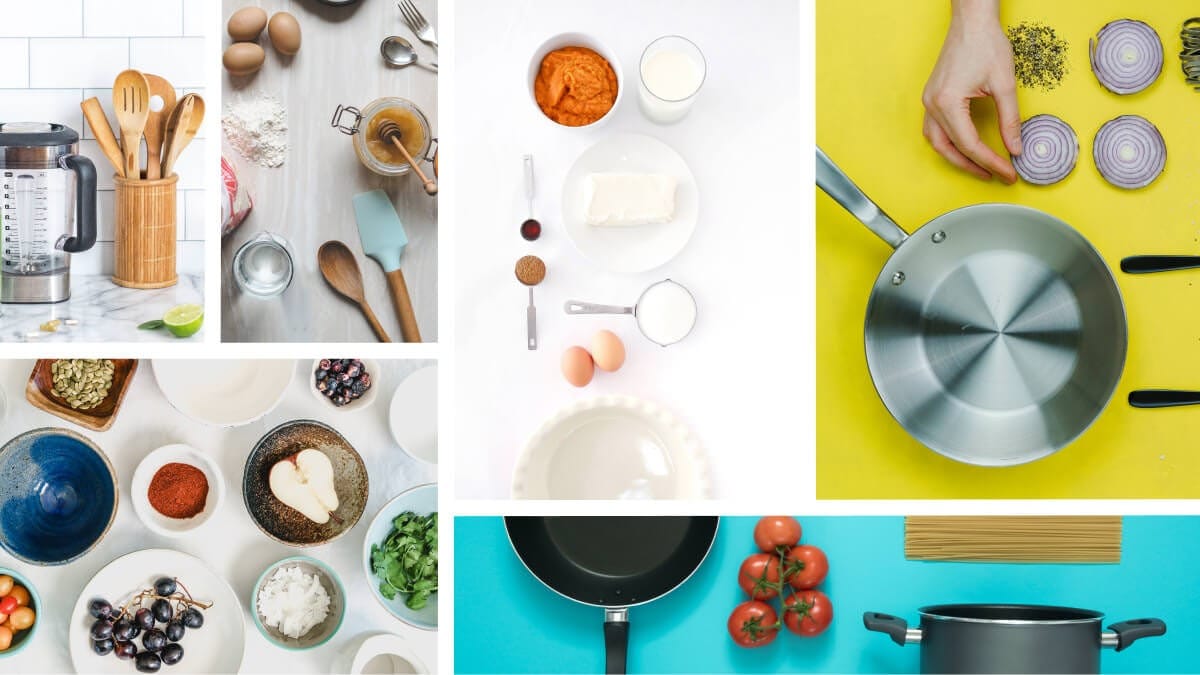
FAQ
Q1: What are the imperative cookware items every home chef should have?
Ans: Every home chef should consider having the following imperative cookware items:
- Chef’s Knife: A high-quality, versatile knife for chopping, slicing, and dicing.
- Non-stick Skillet: Perfect for cooking eggs, pancakes, and delicate foods without sticking.
- Cast iron skillet: excellent for searing, baking, and providing great heat retention.
- Stock Pot: Ideal for making large batches of soups, stews, and boiling pasta.
- Roasting pan: essential for roasting meats and vegetables in the oven.
- Saute Pan: Perfect for quick cooking with a bit of oil, suitable for stir-frying and browning foods.
- Baking Sheets: Great for roasting vegetables, baking cookies, and preparing sheet pan meals.
- Mixing bowls are necessary for preparing ingredients and mixing batters.
Q2: Do I really need both non-stick and stainless steel cookware?
Ans: Yes, incorporating both non-stick and stainless steel cookware into your kitchen provides versatility. Non-stick cookware is excellent for cooking sticky foods like eggs and pancakes, making cleanup easier. On the other hand, stainless steel cookware is perfect for browning and deglazing, allowing for enhanced flavors in dishes, especially when making sauces. Each type has its strengths, so having a mix will help you tackle various recipes with ease.
Q3: How do I maintain my cookware for longevity?
Ans: Proper maintenance of your cookware is crucial for longevity and optimal performance. Here are some tips:
- Non-stick cookware: Avoid using metal utensils that can scratch the surface. Clean with a soft sponge and mild dish soap, and avoid stacking them to prevent scratching.
- Cast iron: Season regularly by applying a thin layer of oil after cleaning to keep the non-stick surface intact and to prevent rust.
- Stainless steel: Use a mild abrasive cleaner for tough stains, and avoid high heat for prolonged periods to prevent warping.
- Glass and ceramic: handle with care to avoid chipping or cracking, and follow specific cleaning guidelines to avoid damage.
By following these tips, you can ensure your cookware remains in great condition for many years to come.
 https://bistrovivant.com is a participant in the Amazon Services LLC Associates Program, an affiliate advertising program designed to provide a means for website owners to earn advertising fees by advertising and linking to Amazon (.com,.co.uk,.ca, etc.) and any other website that may be affiliated with the Amazon Service LLC Associates Program. As an Amazon Associate, I earn from qualifying purchases.
https://bistrovivant.com is a participant in the Amazon Services LLC Associates Program, an affiliate advertising program designed to provide a means for website owners to earn advertising fees by advertising and linking to Amazon (.com,.co.uk,.ca, etc.) and any other website that may be affiliated with the Amazon Service LLC Associates Program. As an Amazon Associate, I earn from qualifying purchases.

